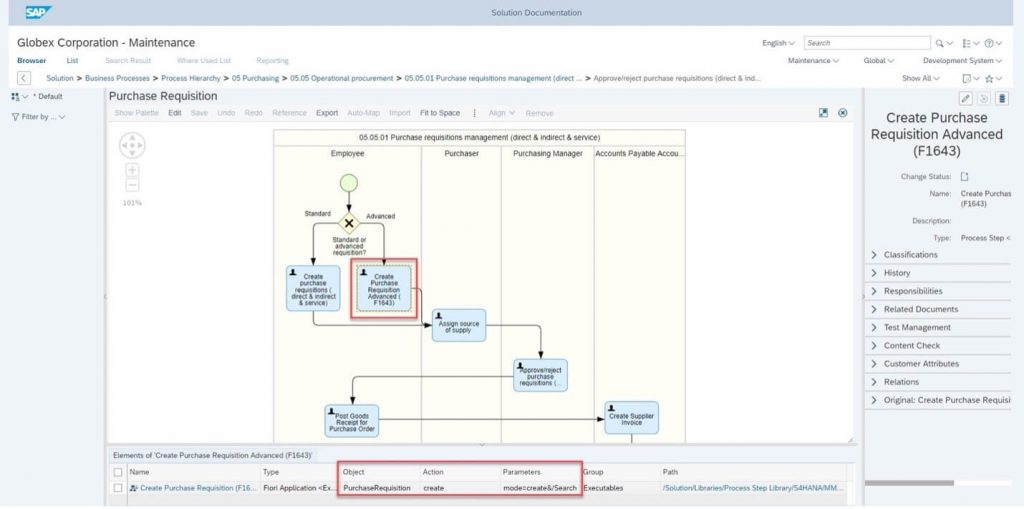Introduction
As working with SAP Fiori applications becomes more and more important for customer I like to share some insights on how to handle them with SAP Solution Manager 7.2 – Process Management.
In SAP Solution Manager 7.2 – Process Management it is possible to document SAP Fiori applications within the solution documentation functionality.
There are basically two ways of working with SAP Fiori Applications in Process Management of SAP Solution Manager 7.2 from SP14 onwards.
First, you can automatically generate a list of all used SAP Fiori applications from your SAP S/4HANA system by using the library generation functionality in SAP Solution Manager 7.2.
Second, you can add manually SAP Fiori applications to the executable library with value help support.
This blog gives you a how to work with SAP Fiori Applications for this two options.
- Executables of type SAP Fiori applications in SAP Solution Manager 7.2
- Working with SAP Fiori Apps Reference Library
- Working with Launchpad content aggregator for SAP Fiori Applications in SAP S/4HANA
- Define the SAP Fiori Application data base for library generation and value help in Process Management
- Using the automated Executable library generation for SAP Fiori applications
- Add manually a new executable of type SAP Fiori application with value help
- Working with parameters for the SAP Fiori applications
Step by Step
1. Executables of type SAP Fiori applications in SAP Solution Manager 7.2
SAP Fiori applications are used to document the execution of a process step. A user can call the SAP Fiori application and is directly forwarded to the respective system if productive systems are connected.
Therefore a SAP Fiori URL is builded in Process Management based on the documented values from the SAP Fiori Application executable.
The SAP Fiori Application link logic is as followed: http(s)://<FrontEndServer/webdispatcher>:<Port>/sap/bc/ui5_ui5/ui2/ushell/shells/abap/FioriLaunchpad.html?#<Sematic Object><Sematic Action><Parameter>
- Replace the Sematic Object (orange) respectively
- Replace the Sematic Action (green) respectively
- Replace the Parameter (red) respectively
Example: Create Purchase Requisition Advanced link

The SAP Fiori applications and its values can be found and searched in the Executable library of Process Management.
You can define a custom SAP Fiori Apps layout the get a better overview of all relevant SAP Fiori data.
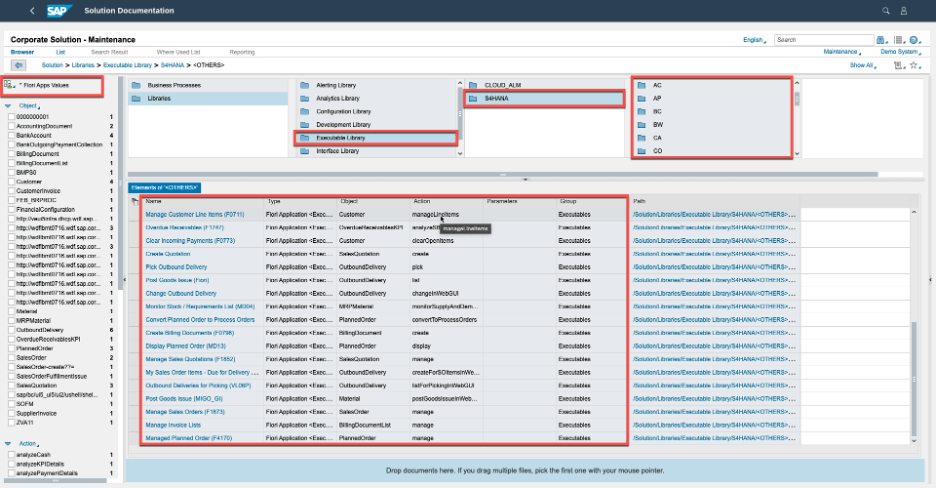
For further details on the Executable library please refer to this WIKI page.
2. Working with SAP Fiori Apps Reference Library
If you do not have SAP S/4HANA system landscape available you can use the SAP Fiori apps reference library to explore all available SAP Fiori apps. Furthermore you can plan your SAP Fiori implementation project to setting up and configuring your system landscape and running your apps in the productive system.
First go to the SAP Fiori apps reference library and search by name, application or industry.
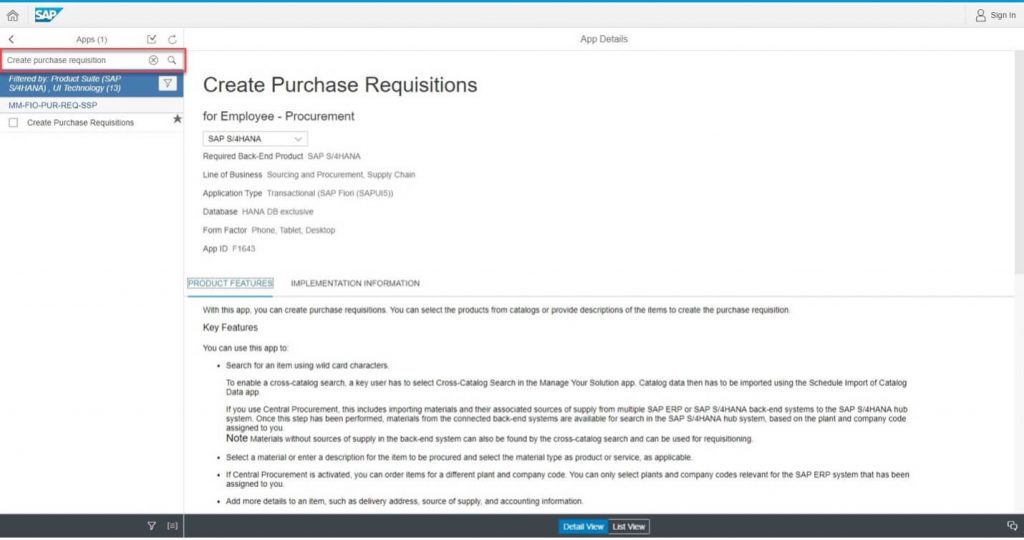
Make sure to select the correct Back-End Product and then go to the “IMPLEMENTATION INFORMATION” tab and open the section “Configuration”.
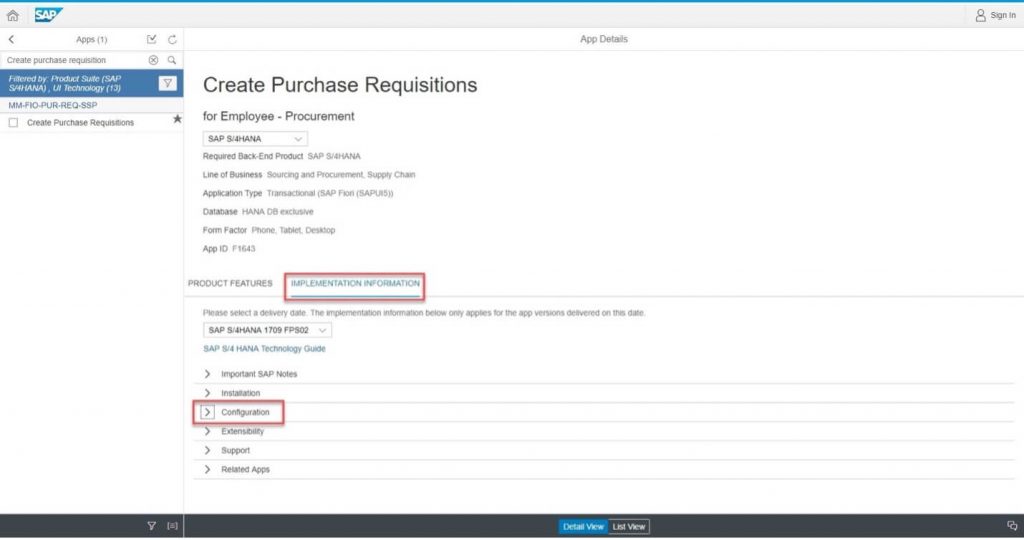
Within the “Configuration” section look for “Target Mapping (s)” and find the “Semantic Object”, the “Semantic Action” and if applicable also “Parameter Value”
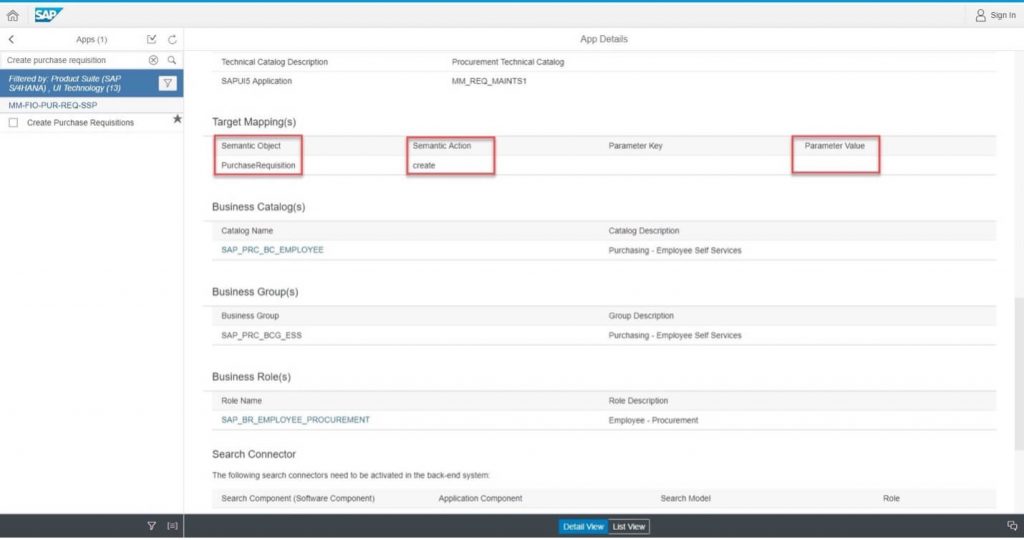
3. Working with Launchpad content aggregator for SAP Fiori Applications in SAP S/4HANA
From SAP S/4HANA 2020 onwards you can use the Launchpad content aggregator (SAP GUI transaction /n/UI2/FLPCA) to get an overview of all configured SAP Fiori Applications in your managed system and client.
Use a custom layout to show all relevant SAP Fiori Application data.
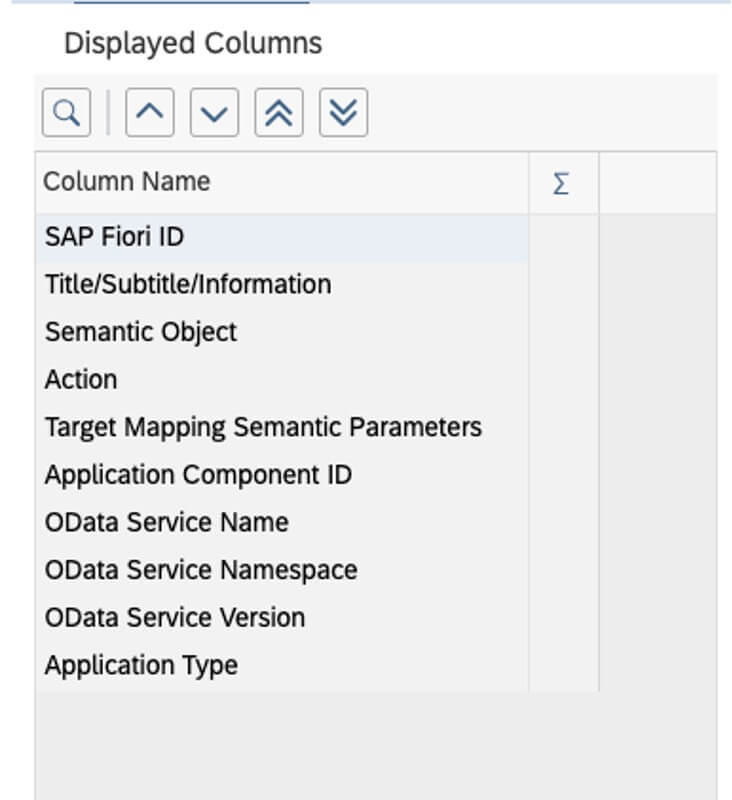
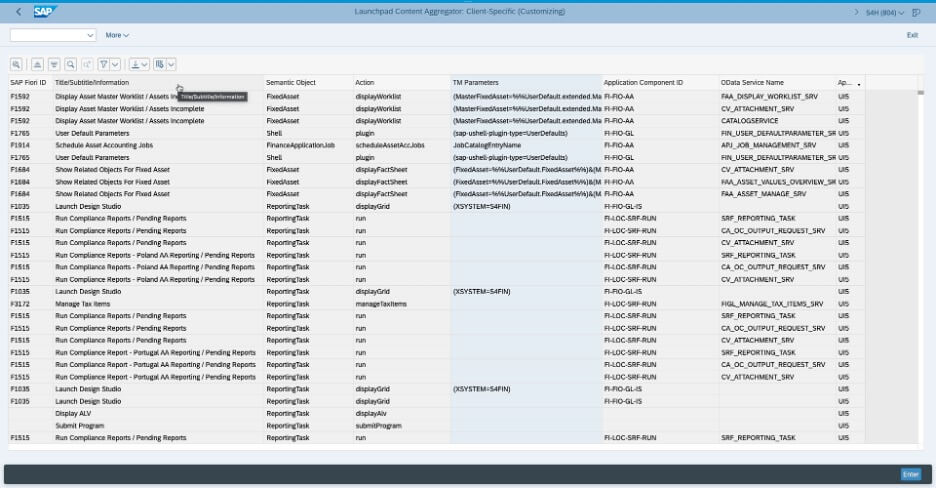
4. Define the SAP Fiori Application data base for library generation and value help in Process Management
To get support for the library generation and to provide a value help for executables of type SAP Fiori Application, it’s necessary to provide data from the managed system or the SAP Fiori App Reference Library.
From SAP S/4HANA 2020 onwards you can use the Launchpad content aggregator (SAP GUI transaction /UI2/FLPCA) to get an overview of all configured SAP Fiori Applications in your managed system and client.
As an alternative the SAP Fiori App Reference Library provide a list of all available SAP Fiori Application for a specific SAP Product and version (e.g. SAP S/4HANA 2020). This data are SAP generic and do not reflect any specific configuration of SAP Fiori Applications in customer system landscape.
Furthermore you can upload custom SAP Fiori Applications which are not available in managed system or SAP Fiori Apps Reference Library.
The following data are required for each SAP Fiori Application: Fiori ID, primary OData service, semantic object and action, the application component, and the title.
With this function you can import SAP Fiori Application data from the managed system or SAP Fiori apps reference library into SP Solution Manager 7.2.
First go to Solution Administration and open the Service Activities → Import SAP Fiori Application data
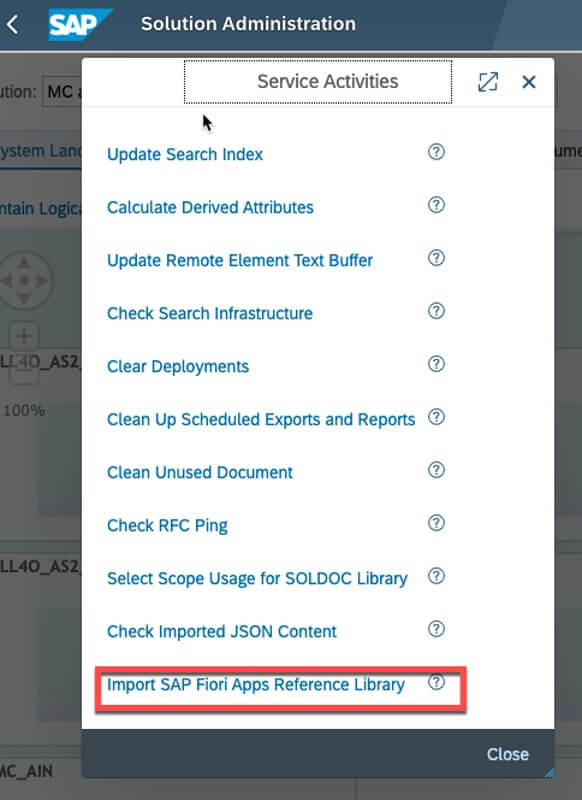
Next, you select the import source.
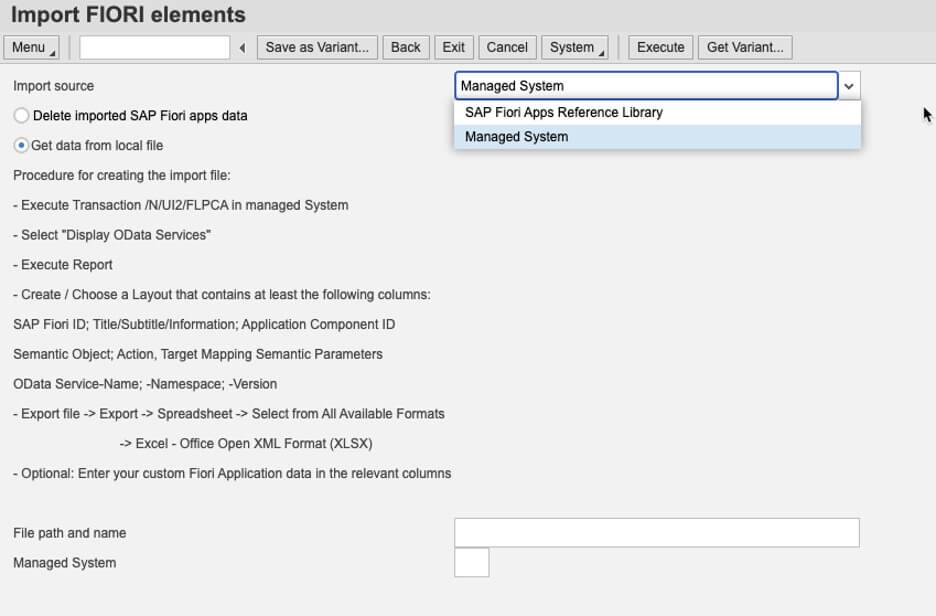
Follow the procedure to create the relevant import file.
After successful upload the SAP Fiori data they are ready to be used for Executable Library generation and for value help.
5. Using the automated Executable library generation for SAP Fiori applications
The library generation checks on used Odata Services in the ST03N of your managed system and compare them with the uploaded SAP Fiori data in Solution Manager.
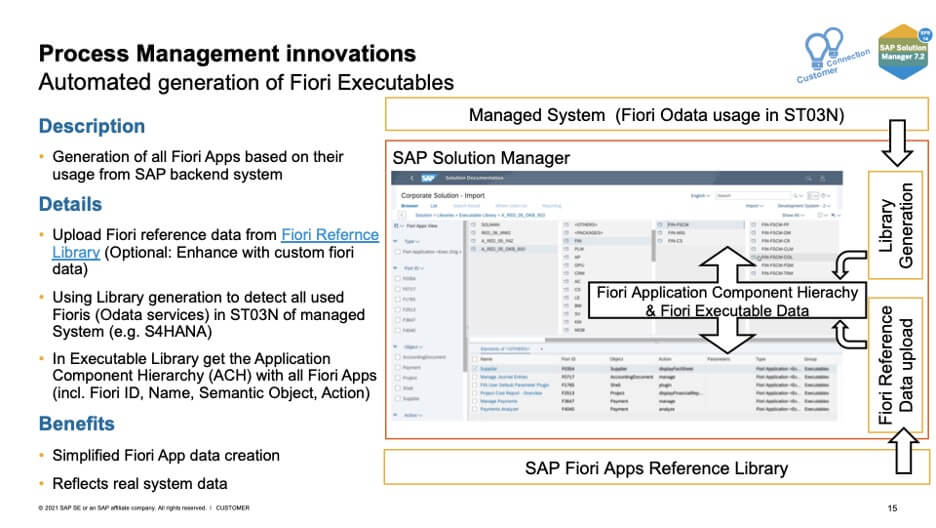
For further details on the Executable library please refer to this WIKI page.
6. Add manually a new executable of type SAP Fiori application with value help
In case you cannot find the required SAP Fiori application in the execution library you can create it manually in the Execution library of your solution.
The executable library’s first level contains a structure of logical component groups. Below the first level, every software system comes with an independent structure. Be sure to follow the software systems’ internal structures. SAP software generally structures applications according to the application component hierarchy (SD, BC, or MM).
For the example “Create Purchase Requisition” navigate to folder of the application component MM-PUR. Use right click in “Elements of” section and select the option “New Executable Element”.
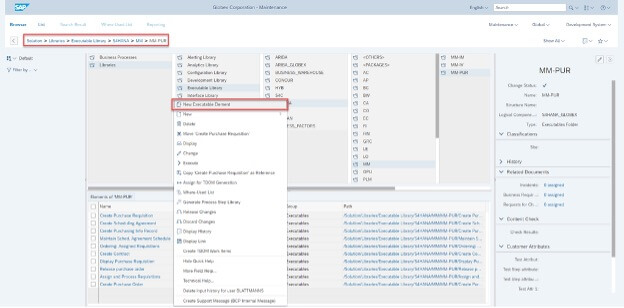
You can direct select your SAP Fiori application and values via value help based on the previous uploaded sheet.
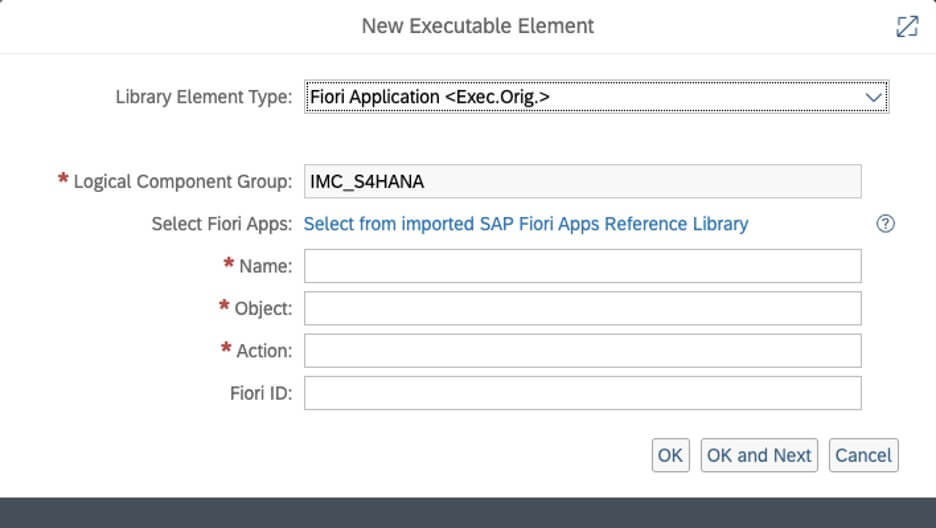
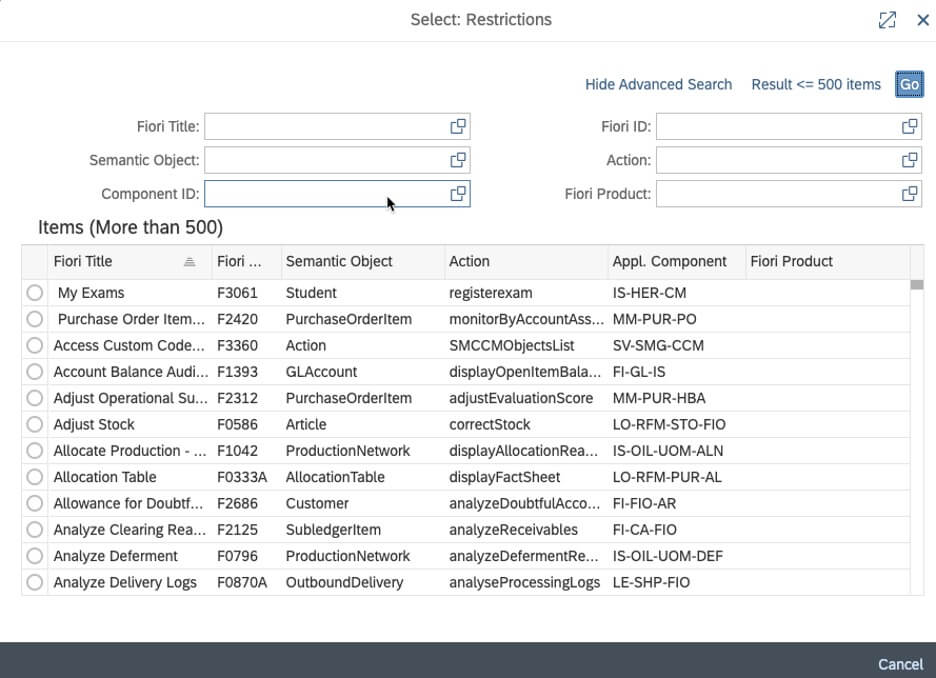
The SAP Fiori Application Executable is created in the executable library.
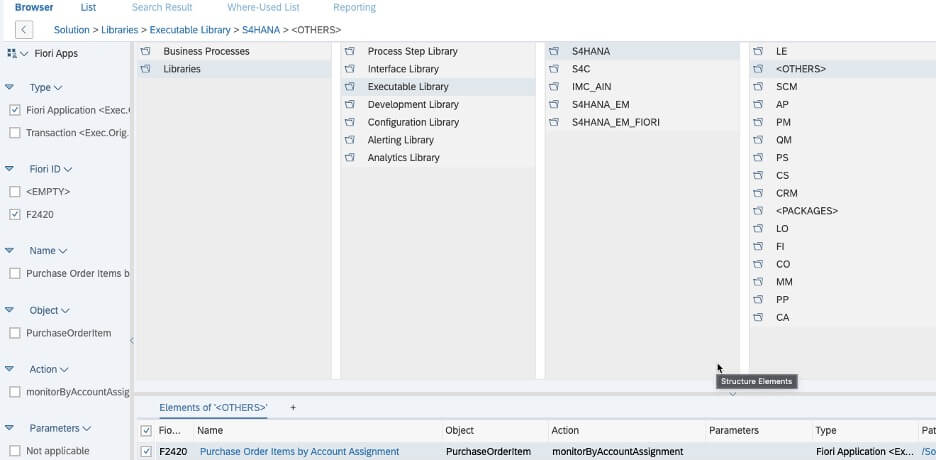
7. Working with SAP Fiori Applications and Parameters
Some SAP Fiori applications can be used in combination with parameters. Parameters offer the possibility to do a parameterized call of the SAP Fiori application. The following example will explain how to work with parameters.
As a first step add the columns “Object”, “Action”, and “Parameters” to the ‘Elements of’ list in order to have a better overview of the SAP Fiori applications.
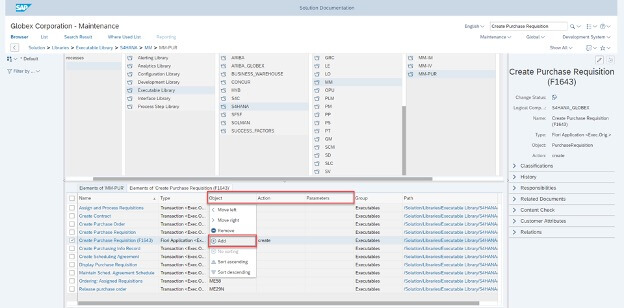
As a next step a process step original needs to be generated in the Process Step Library. To do so do a right click on the executable original and select “Generate Process Step Library”.
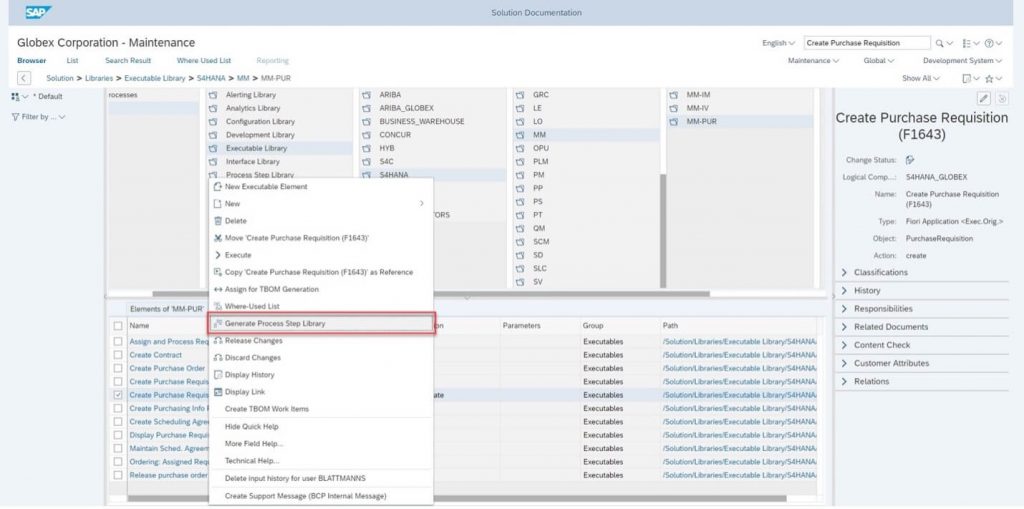
The next pop-up shows the number of existing Process Step Originals with this executable. In case there is already a Process Step Original available select the option “Create All (Including Duplicates)” in order to create a duplicate.
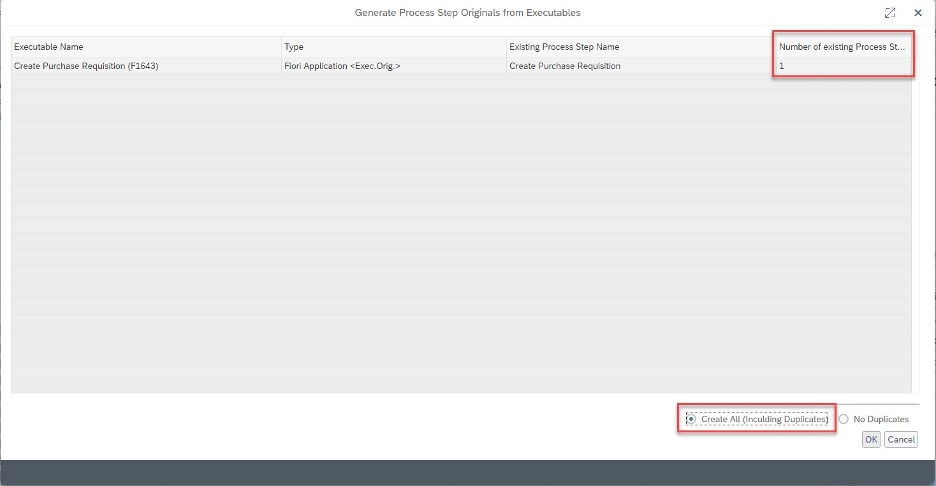
Navigate to the Process Step Original in the Process Step Library and rename the process step accordingly.
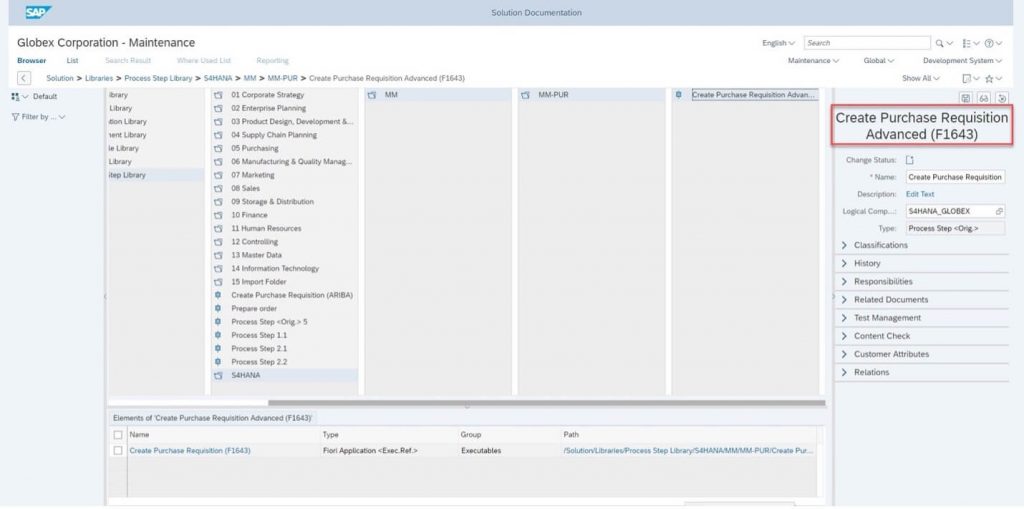
Select the SAP Fiori Application Executable and open the section “Classification”. Maintain the SAP Fiori application parameter in the attribute “Parameters (Name & Value)” and save changes.
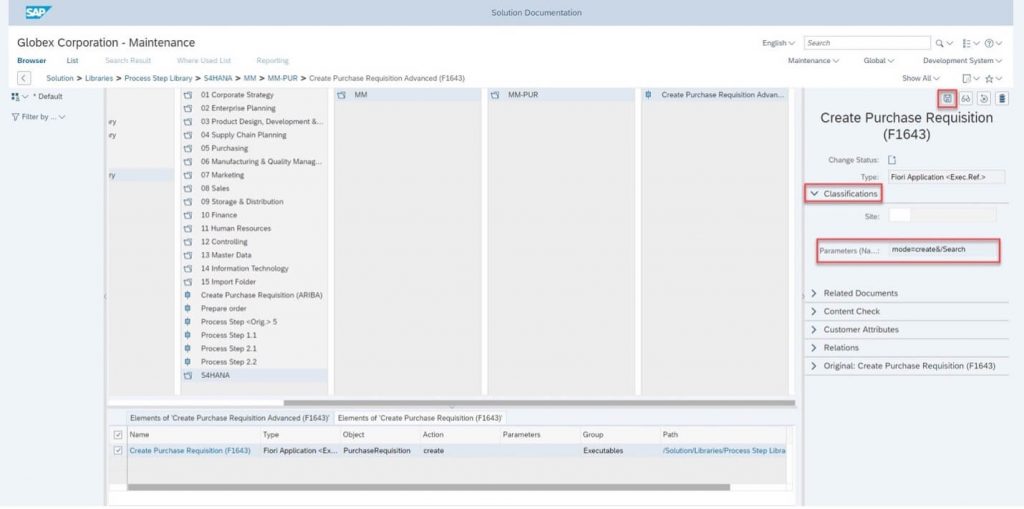
The Process Step Original has now a SAP Fiori application with a parameter assigned.
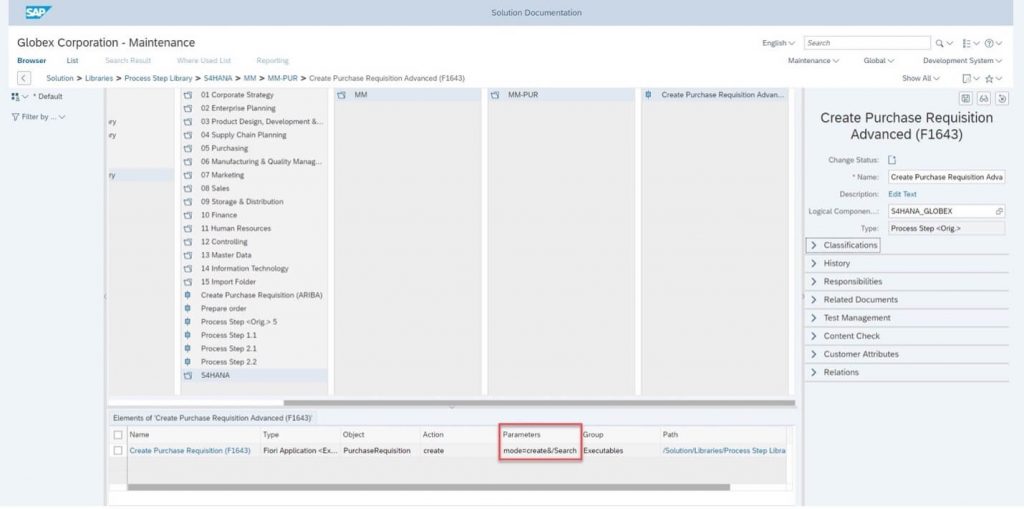
To re-use the Process Step Original for the solution documentation right click on the Process Step Original and select the option “Copy ‘Create Purchase Requisition Advanced (F1643) as Reference”.
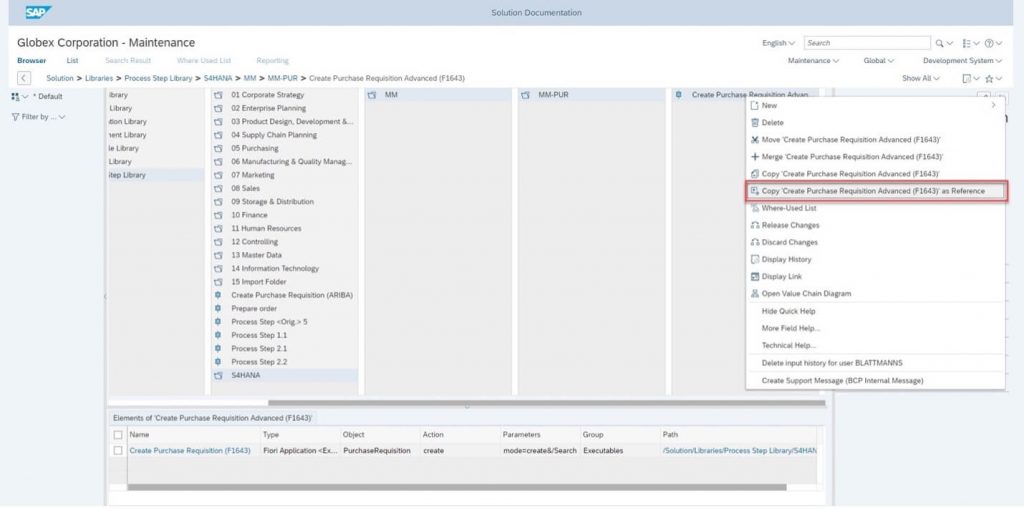
Navigate to a respective folder within the Business Process structure. Do a right-click and select the “Insert Reference to ‘Create Purchase Requisition Advanced (F1643) to insert a process step reference.
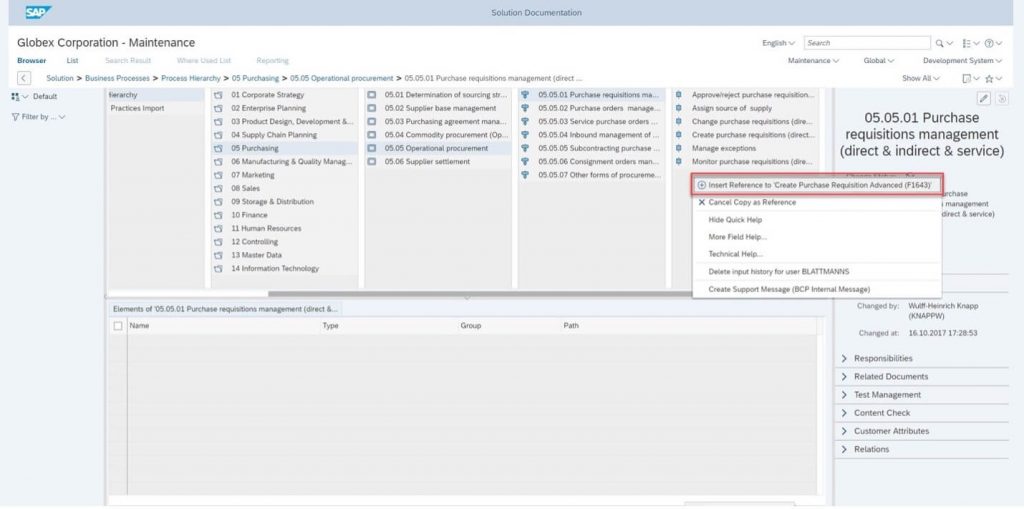
The process step is now available as a reference and can be used for the solution documentation.
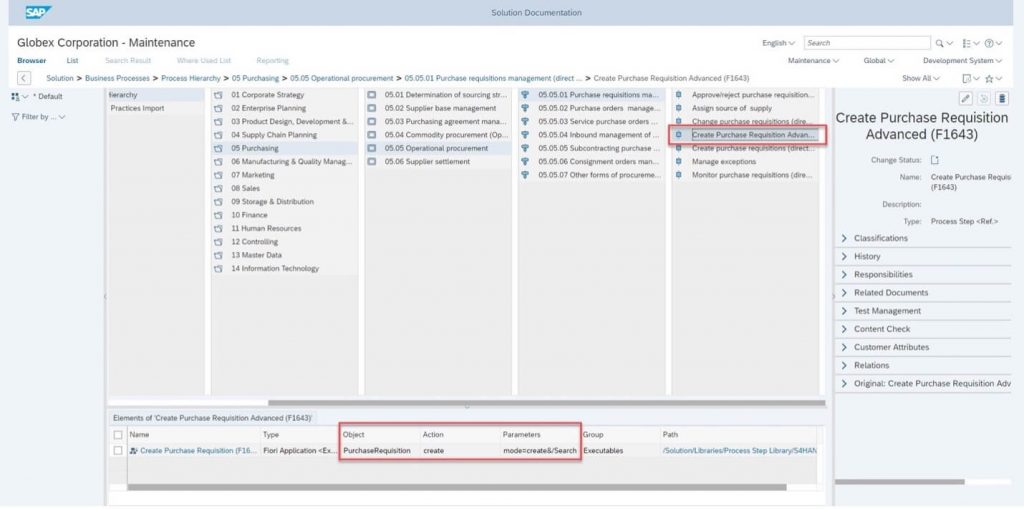
In the below example the process step “Create Purchase Requisition Advanced (F1643)” is used as a process step variant to create an advanced purchase requisition within the purchase requisition process.
